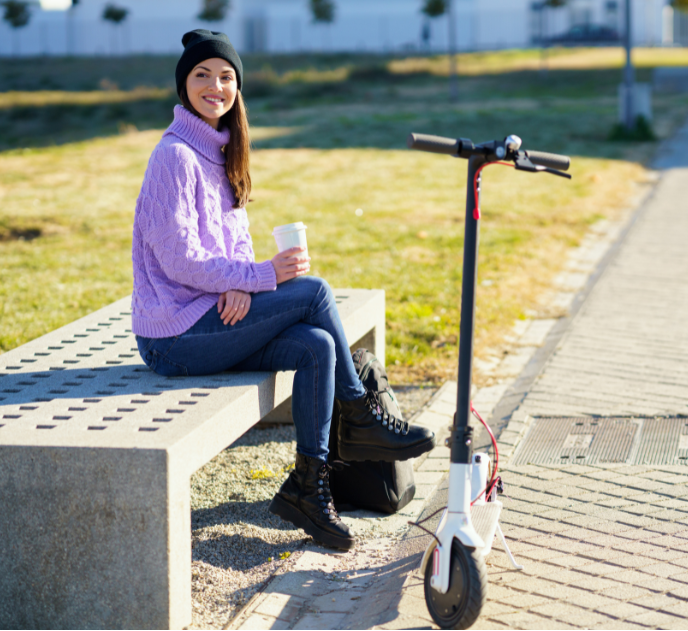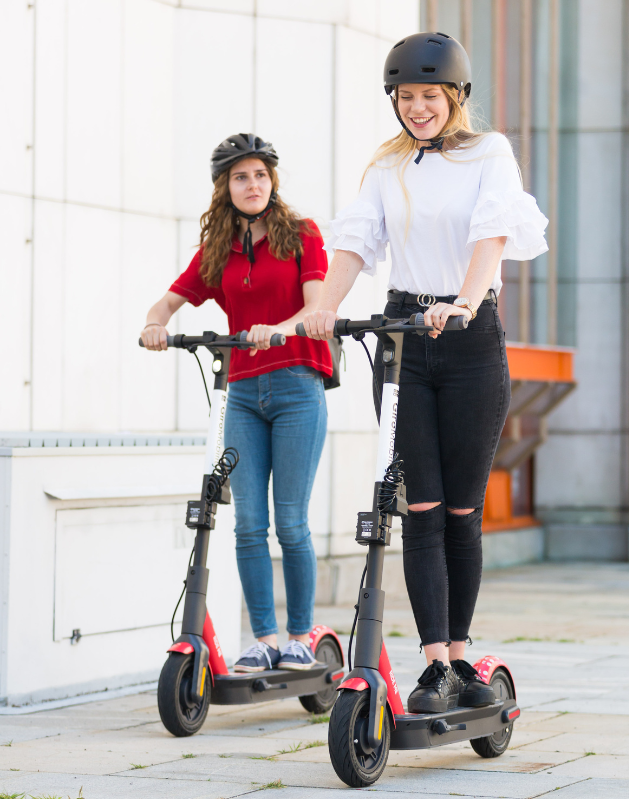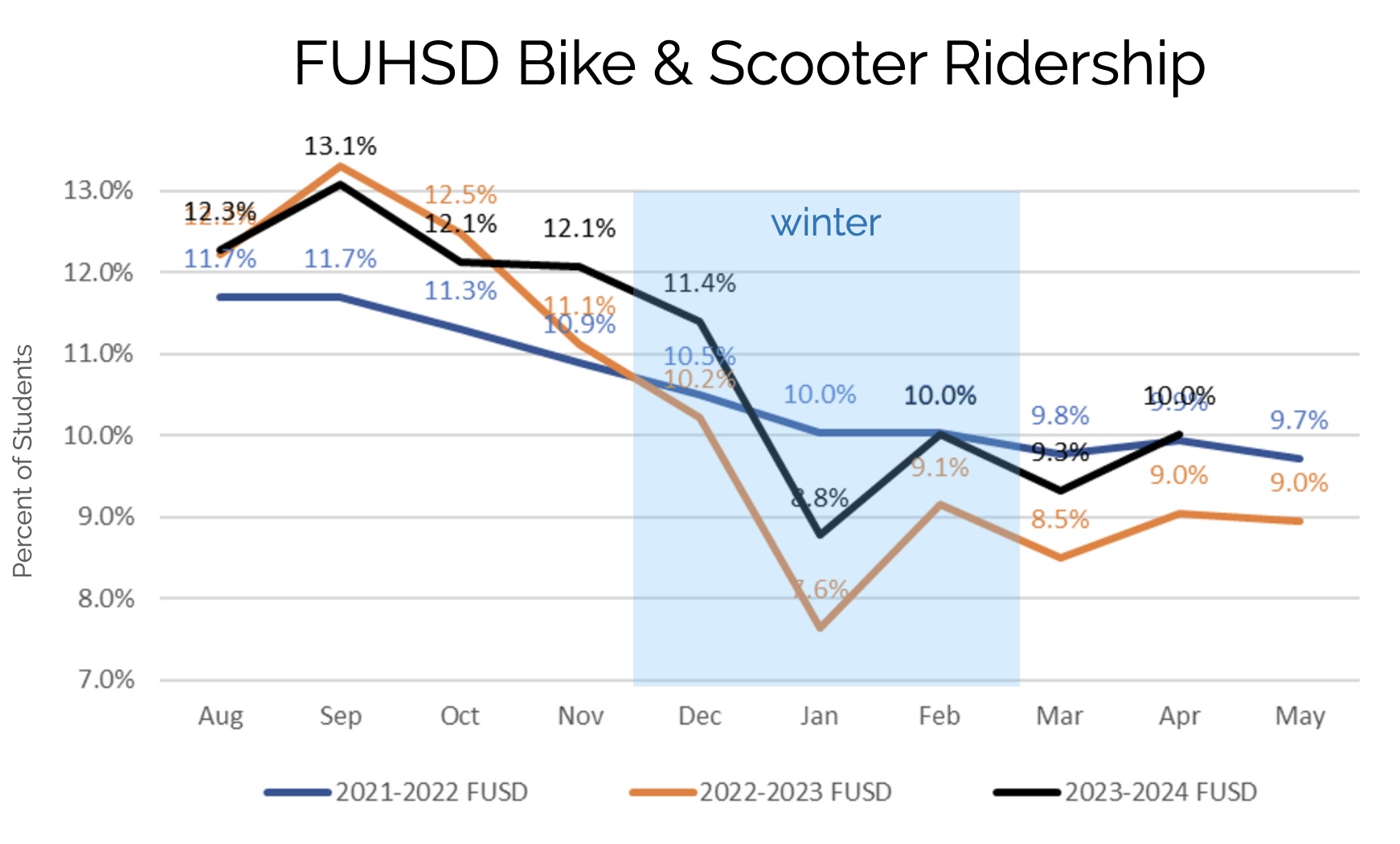In Cupertino, the use of e-scooters and e-bikes among students commuting to school has seen a significant rise, reflecting broader trends in sustainable transportation.
According to recent data from monthly bike counts at all the Fremont Union High Schools (FUHSD), bike and e-scooter counts have increased across most schools compared to the 2022-23 school year. This is even more exciting, as the past year’s winter (2023-24) was unusally rainy, which generally tends to reduce the number of walking and biking students. (This is why there is always a drop in the graph starting in December.) Therefore, this modest increase is likely more significant.

Electric Scooters increasing in popularity
Electric scooters, in particular, have gained substantial popularity. At Monta Vista High School (MV), there has been a notable surge in the number of students using e-scooters, marking a significant shift in how students choose to get to school. This increase is part of a broader trend.
At Cupertino High, the number of scooters students are using doubled from the beginning to the end of the last school year.

Why e-scooter use and e-bike use will likely rise
Likely e-scooter and e-bike use will rise. There’s just too many good reasons not to use them. They:
- allow students to gain independence from being driven by parents to all activities and school;
- provide a comfortable and easy ride, even in hilly locations;
- are an environmentally friendly commuting option.
The rise in e-scooter use has issues, however, with the main one being safety for the rider and for pedestrians nearby. Especially because of their power, e-bikes and e-scooters need to be ridden responsibly: with a helmet, at less than 20mph, obeying all traffic laws, and being watchful of pedestrians when using a scooter on the sidewalk. Many teens are not ready for a powered scooter or bike until they are 16.

Homestead High lags behind other schools for biking and scooter use
Interestingly, while most schools have reported higher numbers, Homestead High has experienced a decline in bike and scooter counts, reaching below even 10%. This is the lowest amount since bike counts began being recorded several years ago. This single school anomaly suggests that local factors, possibly related to infrastructure or student preferences, might be influencing this downward trend.
As the city of Cupertino continues to emphasize sustainable transportation, the rise of e-scooters and e-bikes among students highlights a shift towards more efficient, environmentally friendly commuting options. Just last year, students biking or using a scooter to get to school avoided adding CO2 to the atmosphere of an equivalent amount to planting 97,181 trees! That’s a stunning amount for a change that’s within reach of most students.
WBC considers active transportation of all types to be beneficial to communities, when done responsibly. Consider whether an e-bike or scooter is a good fit for your teen or yourself.


E-bikes and scooters require a driver’s license in the state of California. I understand the convenience of them, but I’ve also seen near misses on them and read about kids getting killed. It’s clear why they need to know the laws of the road, when they’re riding on it. I wish the police would enforce this before more kids are hurt/killed. But wanted to make sure you were aware of the law since you wrote this article
Hi Heidi, thanks for letting us know your concerns! E-bikes do not need a driver’s license, but scooters do.
I found the information on what’s needed to ride an e-bike and an e-scooter in California from the dmv here: https://www.dmv.ca.gov/portal/handbook/motorcycle-handbook/license-requirements/.
We at WBC agree that all bikes and scooters need to be operated in a safe manner, while wearing a helmet, not wearing earbuds/headphones, and paying close attention to vehicle traffic on roads and pedestrians while on shared paths.